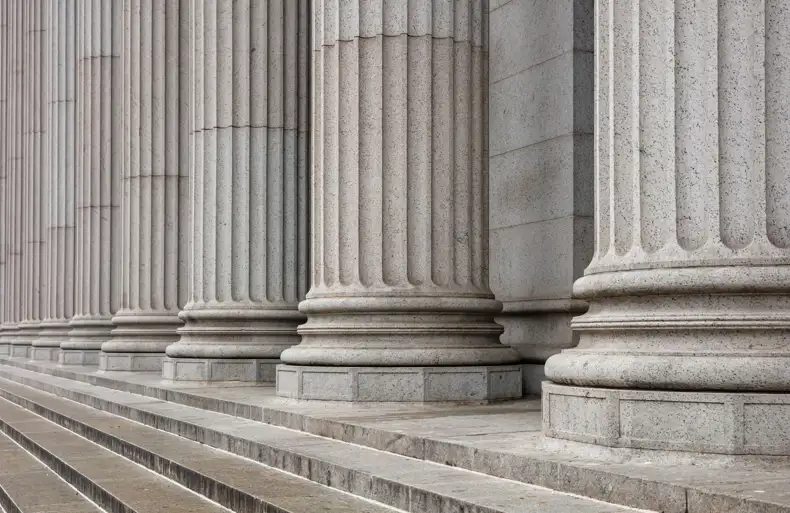Blog | Receivership
To Build or not to Build

Whilst I am no Shakespeare, 'to build or not to build' is a question that we in the Allsop Recoveries and Receivership team seem to be continually asking ourselves. That last time this phrase was on our minds was in the aftermath of the Global Financial Crisis, and we are again having to ponder this question more and more often when dealing with appointments over part built development schemes.
So What are we Seeing?
In the past 12 months alone, the number of development receivership appointments has increased tenfold compared to that of 2022/2023. A staggering 60% of those appointments are part built developments.
Following Covid and the fallout from Brexit, build costs sky rocketed, however the rise was negated by house price growth and incredibly cheap borrowing. Whilst high and rising building costs usually mean choppy waters for the developers, exits were still available due to the underlying strength in the market.
However, the global political uncertainty, the cost of living crisis and the increased build costs coupled with decreasing house prices and the well documented exponential rise in interest rates, have coincided to create that perfect storm. This has resulted in every element within the development appraisal shifting in the wrong direction.
There has been a substantial rise in developers becoming insolvent during the construction process and therefore the number of part-built developments in distress has dramatically increased. The part-built nature of these distressed assets, does really vary, whether that be a development requiring snagging works or significant structural and engineering works to reach practical completion. The lender appetite for patience and further funding is being ever tested.

What do we consider?
The decision to build or not to build is complex and is made on a case-by-case basis. Do we complete the build and sell, or do we sell now as is subject to the remaining works?
When considering our recommendations and approach we need to understand the following elements by having extensive conversations with development and local agents, auctioneers, project managers, contractors and building control before we consider next steps, these are:
1
What is outstanding to reach practical completion and what is the likely cost?
5
What is the debt level?
2
How long will this likely take?
3
What is the property worth once complete?
4
What is it worth now, as is?
Why sell now as is?
Surely if you can complete the works, the property will be worth more which is better for all parties? Well, simplistically yes, however from our experience, this is part of a more holistic discussion.
Firstly, building out often costs significantly more than you budget for. Whilst on the face of it a scheme requires a budget of say £100,000 to finish, once you commence works, it is very likely these costs will rise as further issues come to the fore. As a result, timeframes are also often pushed out which means that hold costs continue to rise along with the interest accruing on the debt and also the market risk.

Unfortunately, when developments are under pressure, many developers cut corners or simply do not pay contractors. There are often hidden issues and pitfalls that arise during a build. For example, once a developer is in financial difficulty they will invariably cut corners which are difficult to detect until you are onsite completing the build.
As an example, we are currently appointed over a scheme in Hampshire, which required finishing works to two high end houses along with a complete re-installation of a drainage system and significant landscaping works. It is clear that significant corners were cut and the development still requires significant capital expenditure to get the site complete. We are building this scheme out which has cost significantly more than budgeted due to hidden pitfalls and quality issues.
Similarly if a development is not yet complete and contractors have not been appropriately paid, contractors can be known to leave their mark of frustration, let’s just say! Clearly, this cannot be foreseen when initially pricing the cost of works or likely timescales. From the schemes we are and have built out, unfortunately, all have had hidden snags which has cost more than initially budgeted for and have taken longer to complete.
On those that we have built out, we have found that when tendering for the building works, many contractors are reluctant to pick up part-complete schemes as they often do not want their names associated with a tarnished development or simply do not have the time or resource to reverse engineer what has or hasn’t been done. This not only adds time but those contractors that do quote will often include higher profit margins to reflect the risk.
When therefore considering building out, we have to be aware of the hidden pitfalls and significant risks that may arise. Once the works have started, it is difficult to put down tools part way through as you are already financially committed and the sale price may not be much greater than it would have been if you were to just sell at the outset.
Selling now, subject to the remaining works is less risky. As a receiver, we do not have a duty to improve, clearly each case is different, however from what we are experiencing, if the debt can be redeemed and all costs recovered, it is certainly prudent to consider exiting as soon as possible.
We did just this with a part-built scheme in North London which was to comprise 39 flats once complete. The developer had run out of money and the lender was no longer willing to lend to further develop the site. The site was not wind and watertight and once again it would require significant works and further lending to achieve practical completion and sell. It was determined that the risks of completing the build were just too great and therefore the property was sold as is via a development agent. Similarly, we are currently in the market with a site on the south coast – currently just a concrete structure but judging by the levels of interest the sea views are mitigating the build risk!
Should I build out?
If selling now does not recover the debt and will likely result in a significant shortfall, we will strongly consider building out. Thanks to our previous experience with dealing with part-built schemes, we carry out thorough net present value calculations to determine the ‘real world’ outlook and what the net outcome could be at the end of the build and sale.
We will have very frank discussions with the lender and ensure that anything we are entering into is with our eyes firmly wide open. As you have seen from the above, it can be a minefield. Of course, if building out and selling, compared to selling now results in a significantly better net outcome, then it is likely we will build out and appoint a best in class project manager and contractors to work with us along the way.

What can be done before it reaches distress?
Where there are concerns that the developer is falling behind or building works may cease, have a conversation with us early! Early conversations can really assist with putting the right tools in place to ensure the developer is overseen and guided throughout the difficult spells.
Additionally, through our extensive experience, we have seen just how important it is for a good Independent Monitoring Surveyor to be involved throughout the build and to complete thorough draw-down reports and have a good grip on what the contractor and developer is doing. Simply, if it were to result in an appointment, this knowledge is invaluable to us and will likely save time and cost.
To deal with the demand from lenders, we offer an asset management role whereby if there is concern, we can work with the developer to understand the scheme, works required and obtain as much information as possible as a pre-receivership step. This often puts pressure on the developer to complete the build or refinance prior to an appointment. However similarly, if it does result in an appointment, we have all the information and tools at hand ready to proceed in an efficient manner.
Related Insights

Why Receivership matters for Property Market Renewal
With private capital now playing a far larger role in lending than it used to, and having less patience than institutional bo...

The snail-like court system is letting down lenders and renters
Logging on to LinkedIn in the last few weeks, my feed has been filled with landlords, lenders and solicitors highlighting the...

Dispelling Receivership Myths
While receivers are in high demand, the process of receivership and our role within it are still poorly understood, and sever...

Receivers to the rescue
Dear Daniel, Good to speak earlier. As discussed, we have a borrower with a buy-to-let portfolio in Reading, who has recently...